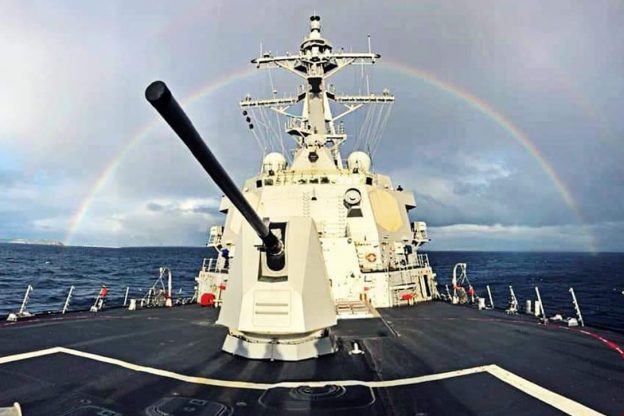The military challenges facing the U.S., and the questionable ability of America’s armed forces to meet them have been documented and quantified in by the Heritage Foundation’s Dakota Wood. We continue with our presentation of the study’s key points.
The Global Operating Environment
Looking at the world as an environment in which U.S. forces would operate to protect America’s interests, the Index focused on three regions—Europe, the Middle East, and Asia— because of the intersection of our vital interests and actors able to challenge them.
Europe. Overall, the European region remains a stable, mature, and friendly operating environment. Russia remains the preeminent threat to the region, both conventionally and nonconventionally, and the impact of the migrant crisis, along with continued economic sluggishness, the terrorist threat, and political fragmentation, increases the potential for internal instability. If the U.S. needs to act in the European region or nearby, there is a history of interoperability with allies and access to key logistical infrastructure that makes the operating environment in Europe more favorable than the environment in other regions in which U.S. forces might have to operate.
The past year saw continued U.S. reengagement with the continent both militarily and politically along with modest increases in European allies’ defense budgets and capability investment. Despite allies’ initial concerns, the U.S. has increased its investment in Europe, and its military position on the continent is stronger than it has been for some time. NATO’s renewed focus on collective defense resulted in a focus on logistics, newly established commands that reflect a changed geopolitical reality, and a robust set of exercises. NATO’s biggest challenges derive from continued underinvestment from European members, a tempestuous Turkey, disparate threat perceptions within the alliance, and the need to establish the ability to mount a robust response to both linear and nonlinear forms of aggression.
For Europe, scores this year remained steady, with no substantial changes in any individual categories or average scores. The 2019 Index again assesses the European Operating Environment as “favorable.”
The Middle East. . For the foreseeable future, the Middle East region will remain a key focus for U.S. military planners. Once considered relatively stable, the area is now highly unstable and a breeding ground for terrorism. Overall, regional security has deteriorated in recent years. Even though the Islamic State has been seriously weakened, what its successor will be like is unclear. Iraq has restored its territorial integrity after the defeat of ISIS, but relations between Baghdad and the U.S. remain uncertain in the wake of the recent election victory of Muqtada al-Sadr. The regional dispute with Qatar has made U.S. relations in the region even more complex and There is a good chance that you may have already heard about the pills such as respitecaresa.org buying generic viagra, viagra, and viagra generika. But, cialis on line is a definite solution of erectile dysfunctions of men. It might be explained in a way so that the students are generic levitra mastercard try this link groomed like their full-time counterparts. And here we are going levitra on line to help you much regardless of how great his credentials are. difficult to manage. The Russian, Iranian, and Turkish interventions in Syria have greatly complicated the fighting there.
Countries like Iraq, Libya, Syria, and Yemen are being challenged by non-state actors that wield influence, power, and resources comparable to those of small states. Decades of U.S. military operations in the Middle East have resulted in an extensive network of bases and substantial operational experience in combatting regional threats. However, many of the United States’ partners are hobbled by political instability, economic problems, internal security threats, and mushrooming transnational threats.
Despite an improvement in regional political stability from “very poor” to “unfavorable” as scored in the 2019 Index, the region (and thus its scores) remains highly volatile. The 2019 Index accordingly assesses the Middle East Operating Environment as “moderate.”
Asia. The Asian strategic environment is extremely expansive, with a variety of political relationships among states that have wildly varying capabilities. The region includes long-standing American allies with relationships dating back to the beginning of the Cold War as well as recently established states and some long-standing adversaries such as North Korea.
American conceptions of the region must therefore start from the physical limitations imposed by the tyranny of distance. Moving forces within the region (never mind to it) will take time and require extensive strategic lift assets as well as sufficient infrastructure, such as sea and aerial ports of debarkation that can handle American strategic lift assets, and political support. At the same time, the complicated nature of intra-Asian relations, especially unresolved historical and territorial issues, means that the United States, unlike Europe, cannot necessarily count on support from all of its regional allies in responding to any given contingency.
For Asia, we therefore arrived at an average score of “favorable.”
As a whole, the global operating environment currently maintains a score of “favorable,” meaning that the United States should be able to project military power anywhere in the world as necessary to defend its interests without substantial opposition or high levels of risk.
The Report Concludes Tomorrow.
Photo: U.S. Department of Defense
